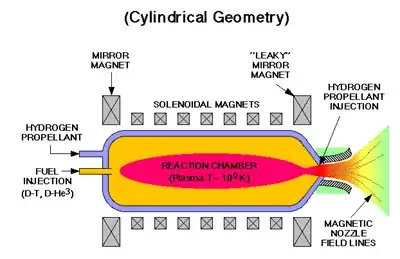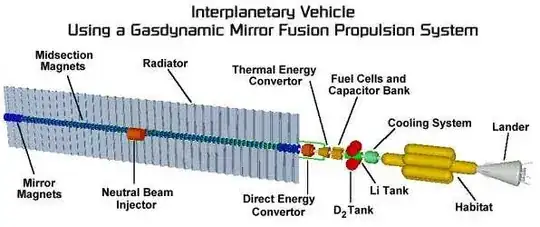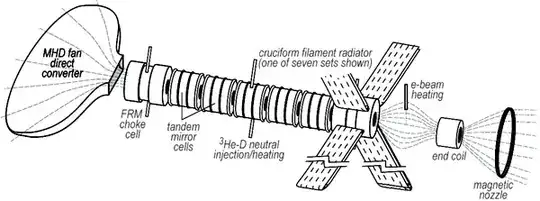I am writing mostly because of that part in a comment: It always seems ironic that cooling is a problem in space...
Other answers have not paid enough attention to the Stefan-Boltzmann law:
$$Q=\sigma T^4\text{, }σ = 5.67×10^{−8} W m^{−2} K^{−4}$$
where $T$ is temperature of emitting surface.
What practical effects does this law actually have? For a blackbody emitter at given temperature, heat loss due to radiation will be:
- 6000K - is energy flow 73MW/m2 (The Sun's photosphere)
- 2000K - is energy flow 900kW/m2
- 1000K - is energy flow 56.7kW/m2
or more usual temperatures for us:
- 300K - it is 460W/m2
- 250K - it is 221W/m2, coolant(Ammonia) on ISS station
- 200K - it is 91W/m2, lowest possible for ISS before coolant begins to clog the system
Vaccuum is not a good insulator, but it seems that way because of the temperatures in which we live and work. Vacuum do not have convection and conduction, which are both important heat transfer modes at room temperature. But at high temperature, radiative transfer becomes much more powerful. The 1000K object listed above gives off as much heat per area as a gas barbeque at full power. In the context of high temperature objects and space, where radiative heat transfer is the dominant mode, vacuum is not an insulator at all.
OP's question
Smart design decisions will solve your heat transfer problem, and carbon nanotubes(CNT) is the material of the future that will allow you to solve them.
The problem with "fireworks with people strapped on top" is the incompatibility between temperatures which are acceptable for humans and the temperatures which are acceptable for machines. So separate them. Separate the living volume from the energy generation units (reactor, engines).
By separating them you have 2 different problems to solve - heat dissipation from living volume (where we have all components which can't be separated from humans, or which have similar temperature requirements as humans) where 300K is the norm; and heat dissipation from reactor-engine where 2000K may be a perfectly normal temperature.
Human quarters
Design of this section depends on size of ship, on personal requirements of volume per human, energy consumption per human.
An example of power consumption per human is 50kW; volume per human 1000m3 (equivalent to a 400 m2 house or less), surface temperature 300K. With these conditions then up to 90 humans can live in a 54m diameter spherical living volume and not even need a radiator. With 4.5MW energy consumption, the surface of the spherical module is enough to emit all that energy.
The sphere is an efficient form because it has minimum surface area per volume it encloses, which means less construction materials and mass per volume. However, this form in space is not so critical, and it may be borg cube or some more flat shape with higher surface to volume ratio. Design plays there significant role. Requirements also are important.
Engines and reactor
The nice thing about fusion reactors is that they can be also engine and electricity generation unit. So we will only talk about one unit.
It is hard to discuss them as hard-science, even when we have some successes with thermonuclear reactors, Wendelstein 7-X
Pictures to illustrate taken from projectrho.com Magnetic Confinement


(Second picture is pretty realistic design, an overview of a ship composition, and have radiator attached in a way we may benefit too. Nice generic picture of a thermonuclear ship as whole)
Notice that the plasma temperature is high and it emits waste heat at a high rate. We have to solve the heat problem for the solenoids, but they may be capable of working at high temperatures, significantly higher then a human's 300K. If we keep this entire compartment at high temperature, than the radiators can have significantly higher temperature and emit lot of energy for relatively small surface.
CNT, thermal properties
The temperature stability of carbon nanotubes is estimated to be up to 2800 °C in a vacuum and about 750 °C in air.
If this is true, then since we are in a vacuum we can operate at 2000K while emitting 1MW/m2 over our radiators.
All nanotubes are expected to be very good thermal conductors along the tube, exhibiting a property known as "ballistic conduction", but good insulators lateral to the tube axis. Measurements show that a SWNT has a room-temperature thermal conductivity along its axis of about 3500 W·m−1·K−1; compare this to copper, a metal well known for its good thermal conductivity, which transmits 385 W·m−1·K−1. A SWNT has a room-temperature thermal conductivity across its axis (in the radial direction) of about 1.52 W·m−1·K−1
This is exactly what we are looking for an insulation in that case, as it is free out of the box if we make the solenoid coils out of CNT. We can get a conductive wire, insulation for that wire, and structural support all out of the same material.
Ed note: you'll need more references to convince me that the same nanotube bundle can do all three
MolbOrg: Valid request. However with given set of factors as: my competence(main reason), difficulties to find information, ongoing researches of CNT(SWNT, MWNT) about their properties and not established data about CNT's because of problems with their production and measuring properties of single tube - single walled or multi-walled nanotubes, amount of information needed to clarify - seems not possible to establish it with some degree of certainty in this answer. Lets call it a fantasy about pure carbon thermonuclear engine, which may or may not to be true. However some notes will be below in note section(1)
The second thing to notice is the coils and separation between them, in vacuum we do not need an enclosure for the plasma. On Earth in the gravity field, we need it for structural integrity and to protect against electromagnetic forces and insulate from the atmosphere. In space we do not need most of that, and we definitely do not need it as a surface without gaps. This way most waste heat from plasma will be emitted directly in to space void without having need to use radiators.

3He-D Mirror Cell
There is an electricity generation unit attached, a Magnetohydrodynamic generator (MHD) that converts plasma exhaust and leakage into electricity.
So the engines basically look like mesh made of structural beams and coil rings, with an attached nozzle or power generation unit on either end (or at one of the ends, also possible).
Another step is that this engine does not have to have fixed attachment to living quarters. The same CNT can be used to make robust cables (same as people imagine for Space elevator) to attach engines flexibly and at a significant distance from living quarters, so as not to mess with their heat emitting solutions.
... get rid of these massive amounts of heat in my spaceship?
The answer is, do not have these massive amounts of heat generated inside of your spaceship, and use the excellent heat transfer properties of vacuum as much as possible.
Note
Carbon nanotubes as conductor, insulator, structural strength element(aka make beam from a rope)
- in first place, situation was considered from heat problem standpoint of view, as it is OP's concern. And some properties of CNT's are interesting in this context and worth to note.
- insulation which will work at that temperature - ceramic is good enough for that, Al2O3 as example. There is no need to use just carbon for that, even if it is possible as I think, as a bit more complex structure then just plain SWNT, SWNT/MSNT doped by something.
Engine which I'm referring to, or use as model is described here. It is good as idea, but that all for it.
It is not scientific paper by any means, even if author tries to refer to some tested equipment, and refers to some works from scientific community for that time and field. But it even have some criticism also not scientific one, just amateur likes that kind of stuff.
Engine is just a concept, with some numbers in its description. However numbers look reasonable, not to make conclusions, but to have some clue about what we may need, and mostly are not unique to that concept only.
make beams from ropes - there are option. An example soft bag in shape of a big sausage will act as beam, higher inside pressure, better beam it will be. Same as with fire hose. Strength of CNT's is about 60-100GPa(depends on who and how did measurements, and which kind of CNT they have tested) and that allows to have pretty high pressure with not so much materials. Internal media which is compressed can be cable made from CNT, and pressure is created by prestretchered winding of external shell which creates that bag and pressure around cable. All together it will have properties of solid beam. But simplest to imagine it is inflatable structure which forms rigid shape. There are other option - in winding(in first place), in using composite matrix, electromagnetic interaction, active structures.
All these problems are far beyond OP's question, but we discover uses for carbon nanotubes, and we are far from exploiting everything they offer to us. Is that material of the future - sure. Will I bet it will replace steel and other construction materials almost everywhere, I will. As hard science it is the best material we currently have, there is no doubt. It looks like it even have superconductive properties, around 0.5K, but still - Electrical Properties and Applications of Carbon Nanotube Structures, page 9
So as far as op interested in future materials, it is. It may be same thing as people 100 years ago was thinking that chemistry will do the magic and can solve everything, and it didn't even if it plays significant role today.



In the case of the shuttle, the system is the same principle, but the heat sink was Freon, not Amonia, and the panels were on the payload bay doors. You'll notice that the orbiter flew with the doors always open. It also flew "upside down" so the black heat tiles were facing the sun during day time portion of the orbit. Black paint is actually good at absorbing and not conducting heat. (cont)
– hszmv Oct 13 '17 at 18:33